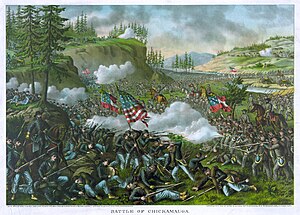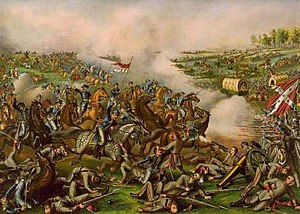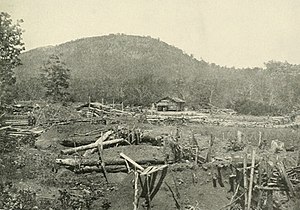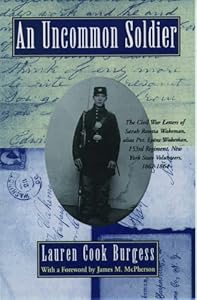 Image via Wikipedia
Image via WikipediaJust back from cultural immersion in the world of relic hunters. I went in search of research material. It was a little overwhelming: Two floors in the Civic Center exhibit hall, and surprisingly crowded. Who knew that there were so many people from just around here with an interest in the Civil War?
There were a few rednecks and a little racism but not nearly as many or as much as I'd expected. The only in-your-face political messages I saw in two hours were the ubiquitous nObama bumper stickers for sale at one booth and a t-shirt with the CSA battle flag on it and the tag line, "If this flag offends you then you need a history lesson."
I don't think I need a history lesson. But I don't think that the way many Southerners fly that flag is a great idea, either.
But I digress. There were swords--including a genuine 18th-century Scottish basket-weave-handled broadsword that made me briefly swoon for Jamie Fraser--and guns, bits and spurs, bullets and buttons galore, original documents, art, and books. Oh, the books! The books were to die for. There were first editions, including one of
Rebel Private Front and Rear selling for $1700!
There were a couple of re-enactors in their uniforms, too. One didn't look too bad but the other was so farby that even a raw recruit like myself could see it. I was embarrassed just to look at him.
I got to meet John Rigdon of
www.researchonline.net fame. Research Online is a must on every genealogist's and military historian's resource list. I had hoped to meet his wife Sylvia Miller, of
www.yesterdaysemporium.com, as well but she was not able to be there today. I did meet her partner in crime, Tami Gallagher, however. Their area of expertise is in Victorian-era clothing.
Another couple had a glass-topped display with dirt, leaves, pine cones and such just like you'd find on the ground in the woods, with some items they'd dug from a cavalry campsite placed here and there in the duff. That was oddly moving, to think of that cavalryman's pistol lying there for 150 years. . .
As I say, all-in-all it was a little overwhelming, probably because it was my first time, and so I had no idea what to expect and went with no real plan of attack other than that I was hoping to find some talisman to aid me in my writing. In the end, all I bought was a $15 CD of rebel yells. This will make sense in a minute. Bear with me here.
I had read that nobody really knew any more what the rebel yell sounded like, because all we had left was contemporary written descriptions, and that made me terribly sad. But when I Googled it, I found two recordings. One was of one lone veteran who stood at the mike for some researchers after a reunion and gave a few short yips. Another was of two veterans at a reunion at Gettysburg who had participated in a little informal handshaking ceremony with some Yankees over a fence. They, too, gave a few yips for posterity. And that was it. It required no little exercise of the imagination to try to extrapolate that to, say, company level, in order to understand what it would have sounded like on the field of battle.
I remember thinking at the time that somebody oughta record and re-record and re-re-record these guys over each other dozens of times (and for a much longer duration) and maybe, just maybe, we might get from that a faint notion of what it must have sounded like when an entire battle line gave that cry, punctuated with the crack of rifle fire and the boom of the artillery, as they surged out of the trenches.
Well, lo and behold, some guys with the technical know-how had the same idea--and did it! And when you hear it like that, you understand just how inspiring it must have been to the Confederates, and just how terrifying it must have been to the Yankees facing them. Worth every penny. The Museum of the Confederacy puts it out, and it's called "The Rebel Yell Lives". I bought mine from Marc & Jill Ramsey of
Owens & Ramsey Historical Booksellers.
Next time I'll have a plan. And I'll allow more time.
















